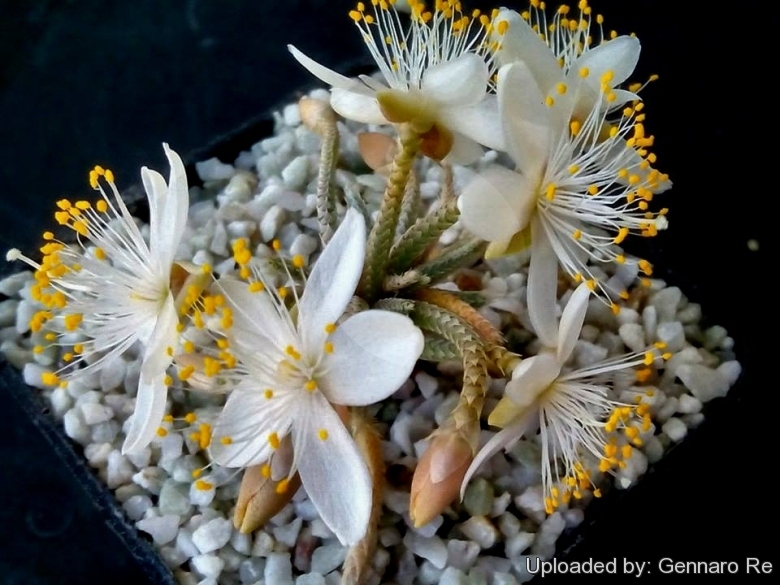
Avonia quinaria subs. alstonii Photo by: Gennaro Re
Origin and Habitat: It is rather widespread in northern Namaqualand, Cape Province, South Africa.
Habitat: It grows usually in dense and localized colonies on flat surfaces or in the hollowed rocks, sometimes on quartz fields.
Synonyms:
See all synonyms of Avonia quinaria
back
Accepted name in llifle Database:Avonia quinaria subs. alstonii (Schönland) G.D.RowleyBradleya 12(prepr.): 111 1994Synonymy: 3
Accepted name in llifle Database:Avonia quinaria (E.Mey. ex Fenzl) G.D.RowleyBradleya 12(prepr.): 111 1994Synonymy: 2
back
Common Names include:
RUSSIAN (Русский): Анакампсерос Альстона
Description: Avonia alstonii is a dwarf perennial caudiciform plant with a large, turnip-shaped rootstock buried to its rim, surmounted with myriads of silvery white stems, flush with the ground. The flowers are delicately shaded with pale pink and the largest of the Avonia section. It is considered the showiest of all avonias.
Caudex (rootstock): Turnip-shaped with a spherical crown, above ground (often pulled down into the ground in time of drought), flattened above, 2 to 8 cm in diameter, given some decades. However some exceptional plants found in nature exceed 15 cm in diameter and could be several centuries years old.
Branches: Very numerous radiating from rootstock, up to 2 mm thick and 2-3 cm long.
Stipules: Silver-white, papery, triangular, acute, not hairy within at the base
Leaves: Reduced to a smooth ball each subtended and concealed by a stipule, but in 5 rows on the stem.
Flowers: Usually white or in shades of pink, solitary, about 3 cm in diameter. Stamens to 60. It's self-fertile, and it can only be reproduced by seeds.
Fruit: Capsule to 7 mm.
Seeds: Very fine-grained light brown seeds.
Subspecies, varieties, forms and cultivars of plants belonging to the Avonia quinaria group
 Avonia quinaria (E.Mey. ex Fenzl) G.D.Rowley: (subsp. quinaria) Flower purple, 1,2-1,5 cm in diameter, leaves in a spiral. Distribution: South-eastern Namibia to Bushmanland and north-eastern Namaqualand.
Avonia quinaria (E.Mey. ex Fenzl) G.D.Rowley: (subsp. quinaria) Flower purple, 1,2-1,5 cm in diameter, leaves in a spiral. Distribution: South-eastern Namibia to Bushmanland and north-eastern Namaqualand. Avonia quinaria subs. alstonii (Schönland) G.D.Rowley: Flowers white up to 3 cm in diameter, leaves in 5 rows on the stem. Distribution: northern Namaqualand, Cape Province, South Africa.
Avonia quinaria subs. alstonii (Schönland) G.D.Rowley: Flowers white up to 3 cm in diameter, leaves in 5 rows on the stem. Distribution: northern Namaqualand, Cape Province, South Africa.
Bibliography: Major references and further lectures
1) Edgar Lamb “The illustrated reference on cacti and other succulents” Blandford Press, 2: 444 (1959)
2) Hermann Jacobsen “A handbook of succulent plants: descriptions, synonyms, and cultural details for succulents other than Cactaceae” Volume 1: 217 (1960) Blandford Press
3) Ben P. Barkhuizen “Succulents of Southern Africa: With Specific Reference to the Succulent Families Found in the Republic of South Africa and South West Africa” Purnell, 157 1978 ISBN 0628014074
4) D. J. Court “Succulent Flora of Southern Africa” Balkema, 110 1981
5) Stuart Max Walters “The European Garden Flora: Casuarinaceae to Aristolochiaceae” Cambridge University Press, 1989
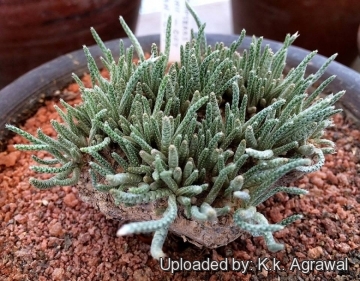 Avonia quinaria subs. alstonii Photo by: K.k. Agrawal
Avonia quinaria subs. alstonii Photo by: K.k. Agrawal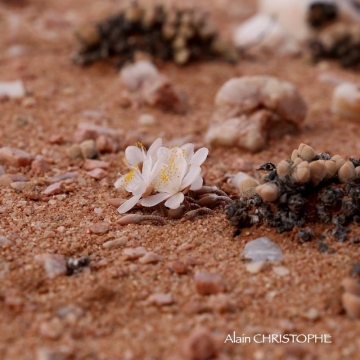 Avonia quinaria subs. alstonii Photo by: © Plantemania
Avonia quinaria subs. alstonii Photo by: © Plantemania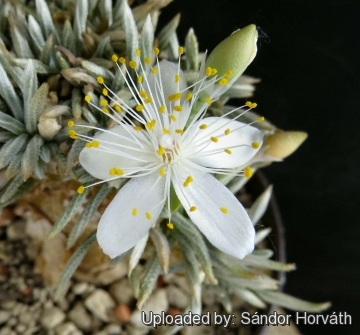 Avonia quinaria subs. alstonii Photo by: Sándor Horváth
Avonia quinaria subs. alstonii Photo by: Sándor Horváth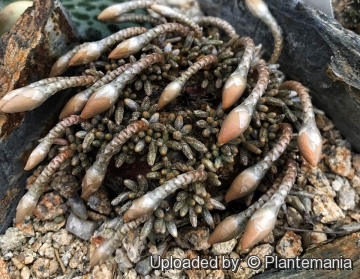 Avonia quinaria subs. alstonii Photo by: © Plantemania
Avonia quinaria subs. alstonii Photo by: © Plantemania Avonia quinaria subs. alstonii Photo by: Valentino Vallicelli
Avonia quinaria subs. alstonii Photo by: Valentino Vallicelli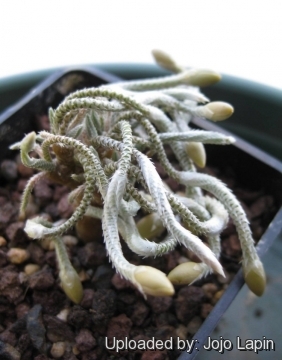 Avonia quinaria subs. alstonii Photo by: Jojo Lapin
Avonia quinaria subs. alstonii Photo by: Jojo Lapin Avonia quinaria subs. alstonii Photo by: © Plantemania
Avonia quinaria subs. alstonii Photo by: © Plantemania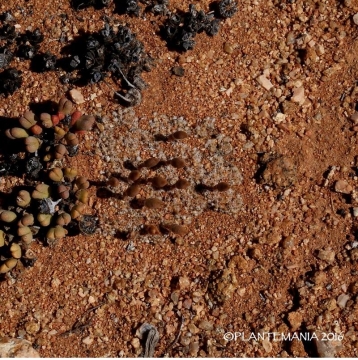 Avonia quinaria ssp. alstonii in habitat. Photo by: © Plantemania
Avonia quinaria ssp. alstonii in habitat. Photo by: © PlantemaniaCultivation and Propagation: Although regarded as a choice and difficult plant, in cultivation it is relatively easy. It is a particular favourite of caudiciform plant enthusiasts.
Growth rate: Plants grow very slowly and caudex take many years to enlarge. Clustering in cultivation, if grown correctly, it will reward the grower with generous displays of tiny flowers.
Caudex exposure: The remarkable tuberous rootstock (caudex) is often raised 1-3 cm above the soil line so that this can be seen and more readily appreciated. For best results the tuber must be exposed only when plans become mature enough, usually after several years (8-12 or more years) of underground growth, as the exposed caudex will no longer increase in size once it has been lifted above the soil line.
Potting medium: Since roots are quite shallow, use a cactus mix or add extra perlite or pumice to regular soil potting soil. A gritty, very free-draining compost is suitable, and clay pots help the plants to dry out between watering. For best results, use a shallow pot, and only use the smallest diameter pot that will accommodate the plant.
Fertilization: Need a perfect fertilizer diet in summer. Use preferably a cacti and succulents fertilizer with high potassium content including all micro nutrients and trace elements or slow release fertilizer.
Watering Needs: Water normally in the growing season from March to October. No water should ever be allowed to stand around the roots. Keep almost completely dry in winter. The swollen caudex makes it very tolerant of under watering.
Hardiness: It is quite frost resistant if kept dry, hardy as low as -5° C. It can be grown outdoors in the summer months to benefit from direct exposure to light, and especially exposure to high summer temperatures. Recommended Temperature Zone: USDA 10-12.
Sun Exposure: This plant has an excellent heat tolerance, and need full sun to light shade exposures. High levels of light are needed to flower and for good plant development.
Rot: Rot it is only a minor problem with Avonia if the plants are watered and “aired” correctly. If they are not, fungicides won't help all that much. The plant turns immediately to mush when over watered, or watered out of season. Care must be given in watering, keeping them warm and wet while growing, and cooler and dry when dormant.
Traditional uses: The dried and pulverized roots and stems were once used as yeast for backing bread and also to brew mead (Honey beer). The fresh corms were also used to treat diabetes they was crushed, boiled and ½ of a cup of decoction taken orally.
Reproduction: The seed will loose viability in storage, and may not be viable the following year, so the seed should be planted as soon after harvesting as possible. Germination usually occurs within about a week or two. Seed germinate at 15-21 °C.
Your Photos

by © Plantemania

by © Plantemania





















